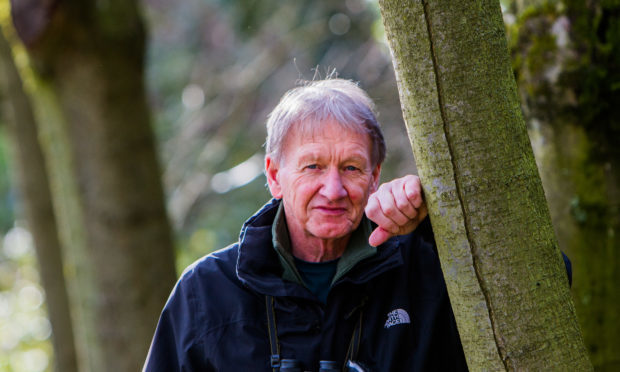I have been fascinated by newspaper columns forever.
My parents’ copy of The Courier was delivered six days a week, and for five of the six my childhood self didn’t pay too much attention to it, but every Saturday there was Colin Gibson’s Nature Diary.
I was a ferociously literate seven-year-old. I devoured it. It immediately became a component part of the multi-layered compost that made Saturday better than all the other days of the week.
It was just a couple of hundred words and a sketch, but it was really two sketches, because what I really liked about it was that the words made a picture too.
It was not just the first newspaper column I ever read, it was also the first nature writing. So if you would like someone to blame for my presence in The Courier every week for the last 20 years, not to mention 35 books of nature writing, blame Colin Gibson.
By the time I started working for this newspaper as a not-quite-17-year-old, I was already a student of newspaper columns. It was something of a golden age: two of the best were a couple of thirty-somethings in the Observer called Michael Parkinson and Michael Frayn. I swallowed them whole.
I was an impressionable 20-year-old when I wrote Michael Frayn a fan letter. I admired the style, the wit, and the way he could summon the perfect quotation from the great writers of literature apparently at will. In my letter, I suggested that he was obviously very well read, and asked if he could advise me what I should read.
He astounded me (a) by replying, and (b) by insisting that he was not particularly well read and that I must read what interested me, not what someone else thought I should read.
I watched his star ascend. Now in his mid-80s he is a multi-multi-award-winning novelist and playwright of rare distinction and I should really have kept that letter.
Fast-forward to 1992, I was no longer a newspaper journalist with a staff job but a fairly impoverished nature writer, and I had just written a book called Waters of the Wild Swan for a London publisher. Their PR people had sent a copy to Michael Parkinson, who was pretty famous himself by this time, but who was having a break from interviewing the great and the good on TV and had a radio show in London.
It seems he lived on the Thames and had swans nesting at the bottom of the garden. Would I fly down to London for an interview? I’m not sure this is what the Wright Brothers had in mind when they invented the aeroplane, but I went.
I was shown to a seat just outside his studio. He would come out in a couple of minutes when there was a break for the news.
A door opened and two men walked out. One of them was Michael Parkinson. He looked at me, smiled, and said:
“Mr Crumley? Hello, I’m Michael Parkinson. This is Michael Frayn.”
The rest of that day remains a blur.
My other newspaper column hero was James Cameron, and he was quite possibly the best newspaper columnist there has ever been, anywhere in the world. After he had stopped travelling the world as a foreign correspondent for various newspapers and for television (his documentaries from Vietnam, Bikini Atoll, and Israel still have a power to chill), he wrote a weekly column in the Guardian.
Not only did I devour that too, I had a paperback collection of them until it literally fell apart with overuse. I still have a cutting of his final column, which was published the day after he died in 1985. He died of throat cancer. The column was headlined ‘A pain in the neck’. What a way to go.
One day in 1997, my old friend Ian Lamb rang to ask if I would like to write a column in The Courier. Would I! Ian and I started work at The Courier within weeks of each other. Ian retired not so long ago after a working life spent at The Courier. Our paths still cross occasionally, most recently at the launch of James Robertson’s book on Michael Marra.
So it’s been twenty-and-a-bit years and more than 1,000 columns, and that seems to me to be enough. The first of them was mildly critical of a proposal to create a J.M. Barrie theme park in Kirriemuir. And you have just read the last one.
If you have hung in there for a year or two, or a decade or two, I am surprised and delighted, and you have my very grateful thanks. If you’ve never read this column at all, it’s too late to start now. I’m done.










